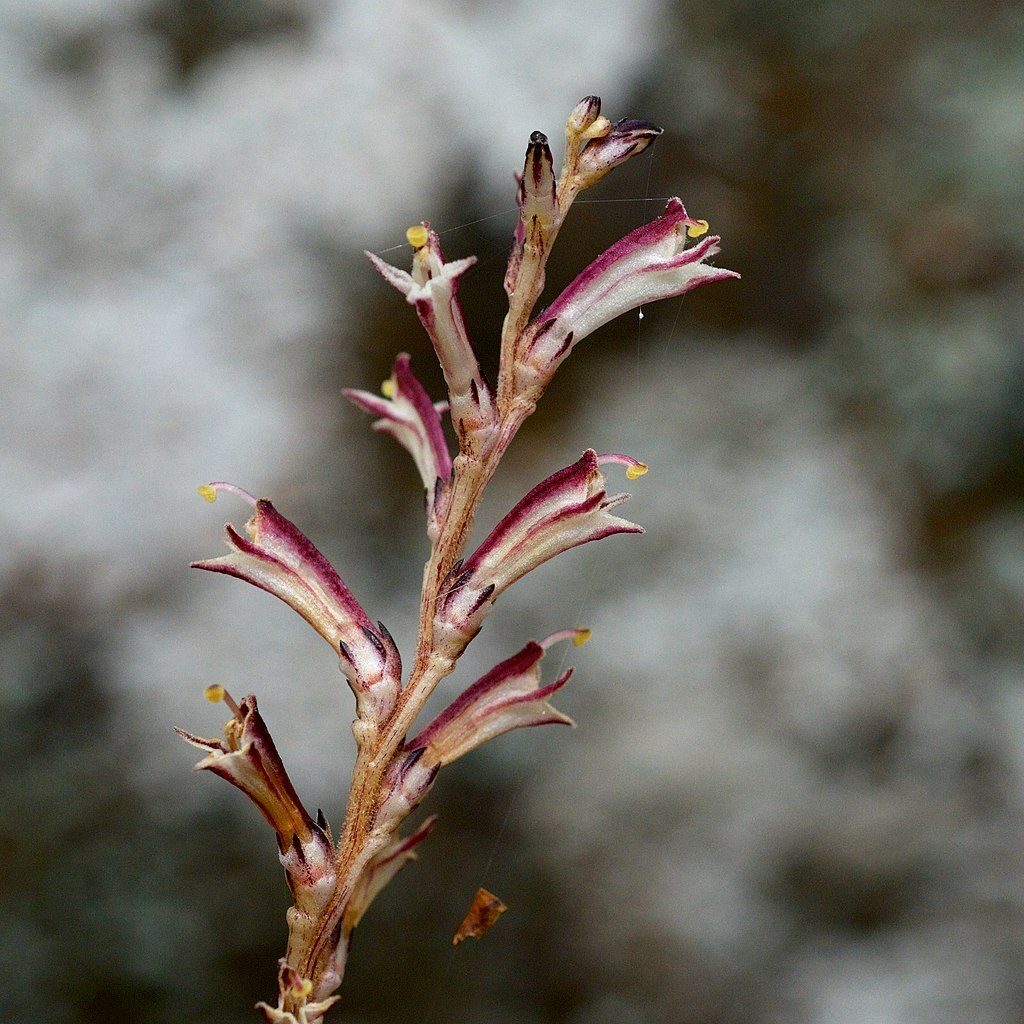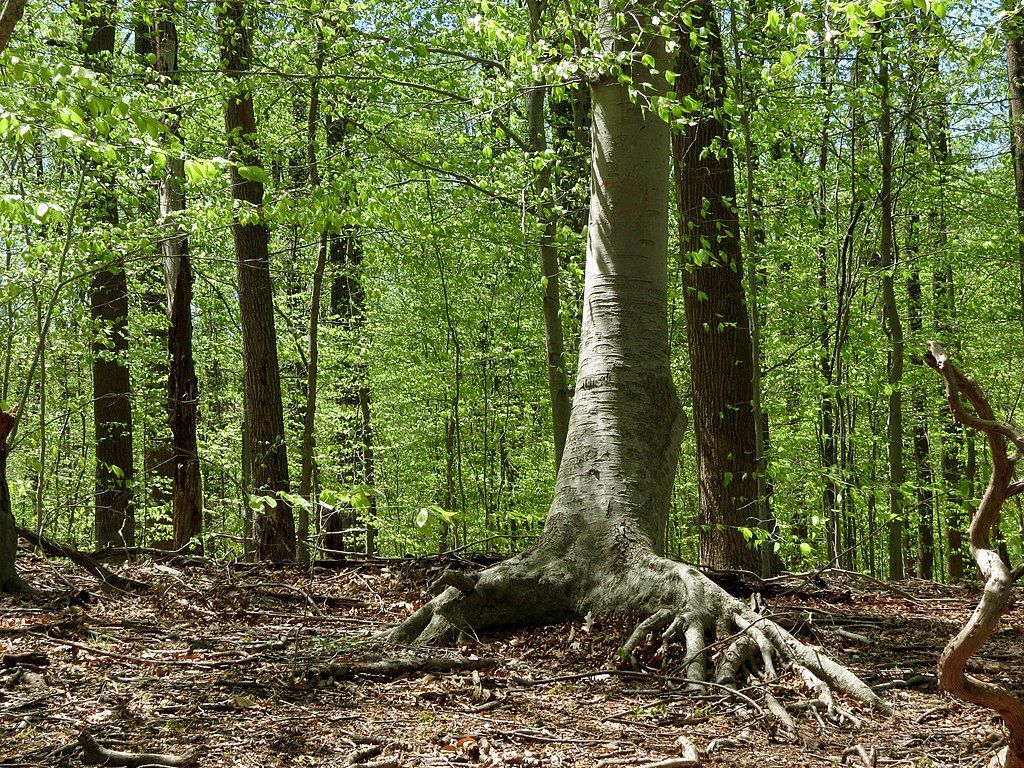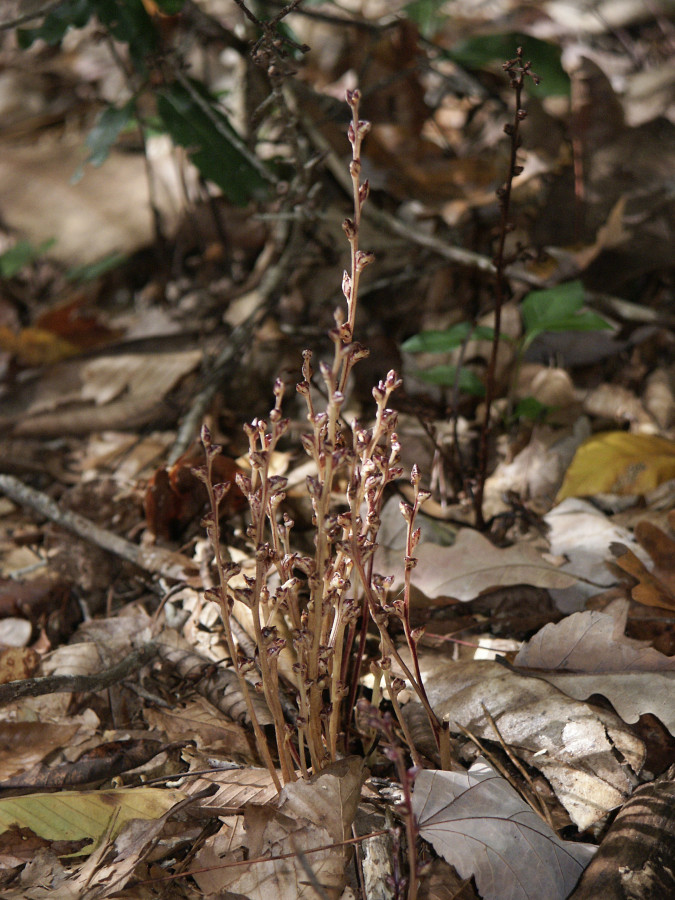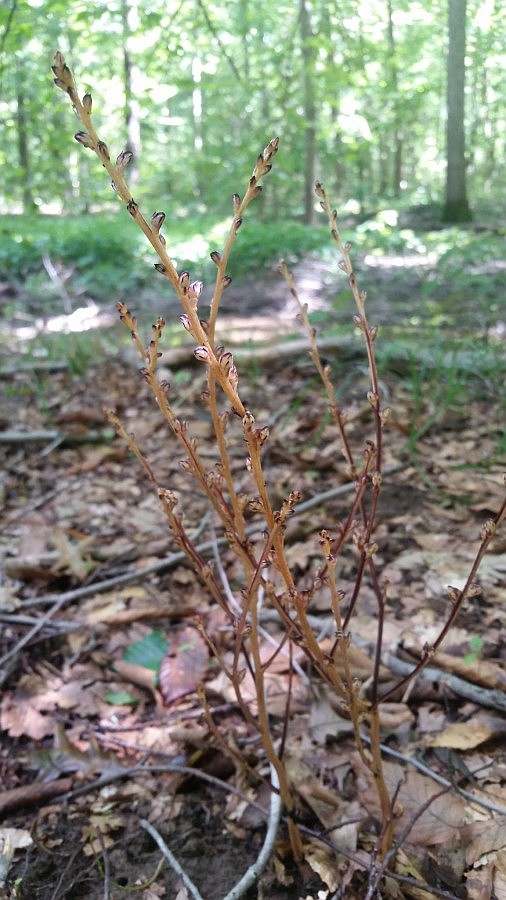
23 September 2021
Tiny purple and white flowers are blooming this month on stems that stand a foot tall in the woods. Unless you know where to look for them, though, you’ll probably never see them. These brown plants match the ground.
Beechdrops (Epifagus virginiana) have no chlorophyll because they are parasitic on the roots of beech trees (Fagus grandifolia). To find the flowers, I find a beech tree(*) then put my head close to the ground and look sideways near the roots.

From this angle beechdrops stand out … barely.
Beechdrops (Epifagus virginiana) bloom from July to December, producing self-pollinating flowers at the base of the plant and cross-pollinating flowers at the top, though some of the top flowers are sterile.
The top flowers are pollinated by the winter ant (Prenolepis imparis) that aestivates underground when its hot and only comes out in cold weather. I imagine that’s why the July-blooming flowers are self-pollinating.
Beechdrops are so dependent on the American beech that their seeds don’t germinate until they detect a chemical signal from the tree.
Beech is really in their name. The genus Epifagus is Greek for epi = On + fagus = Beech.
Literally, on the beech.
p.s. (*)Find a beech tree: American beeches have very smooth pale bark. See this blog post for tips on how to identify them: Winter Trees: American Beech.
(photos from Wikimedia Commons and Flickr Creative Commons license; click on the captions to see the originals)


We were hiking in the eastern part of PA this past week and were lucky to find beechdrops in a couple of places.